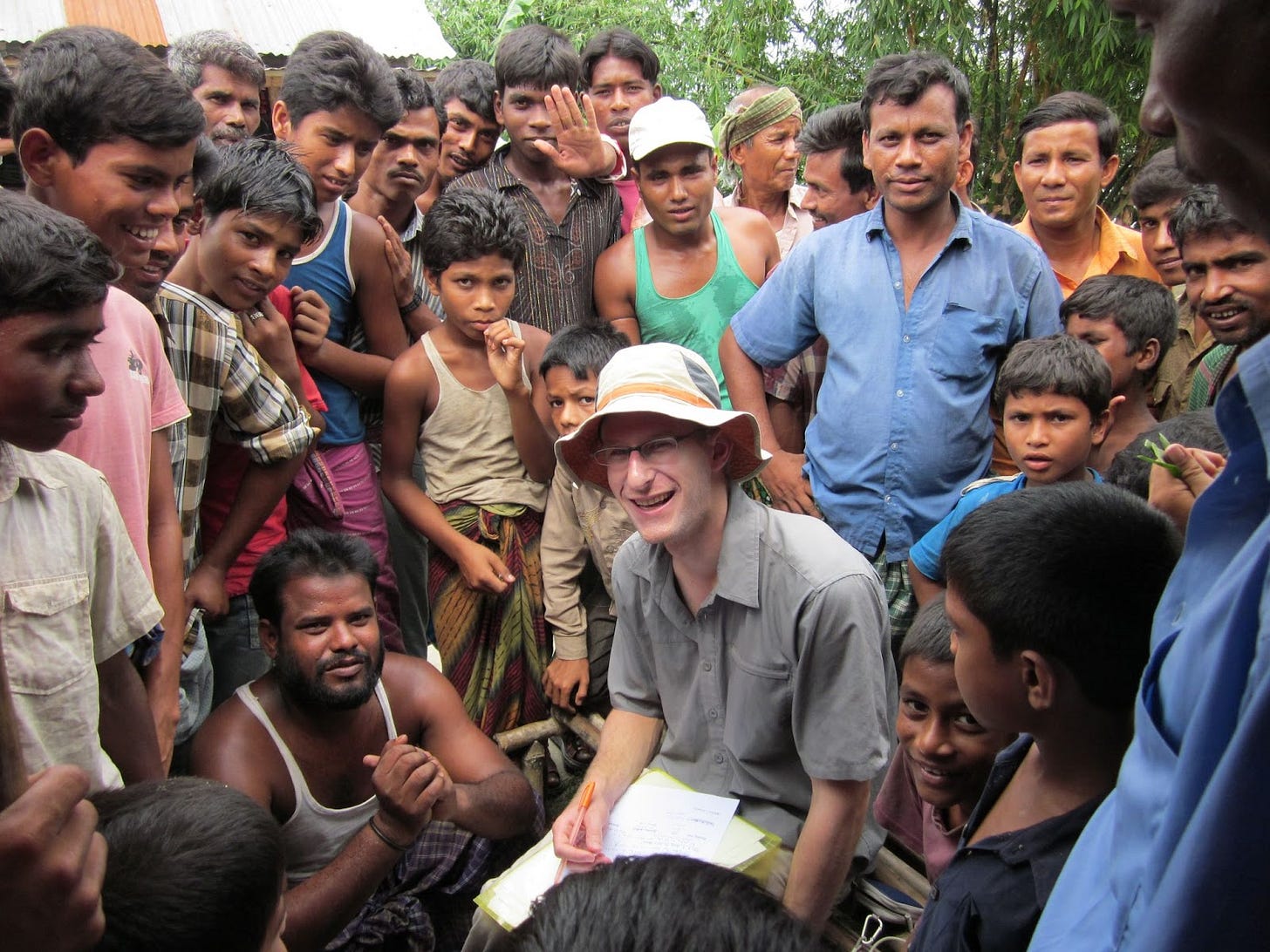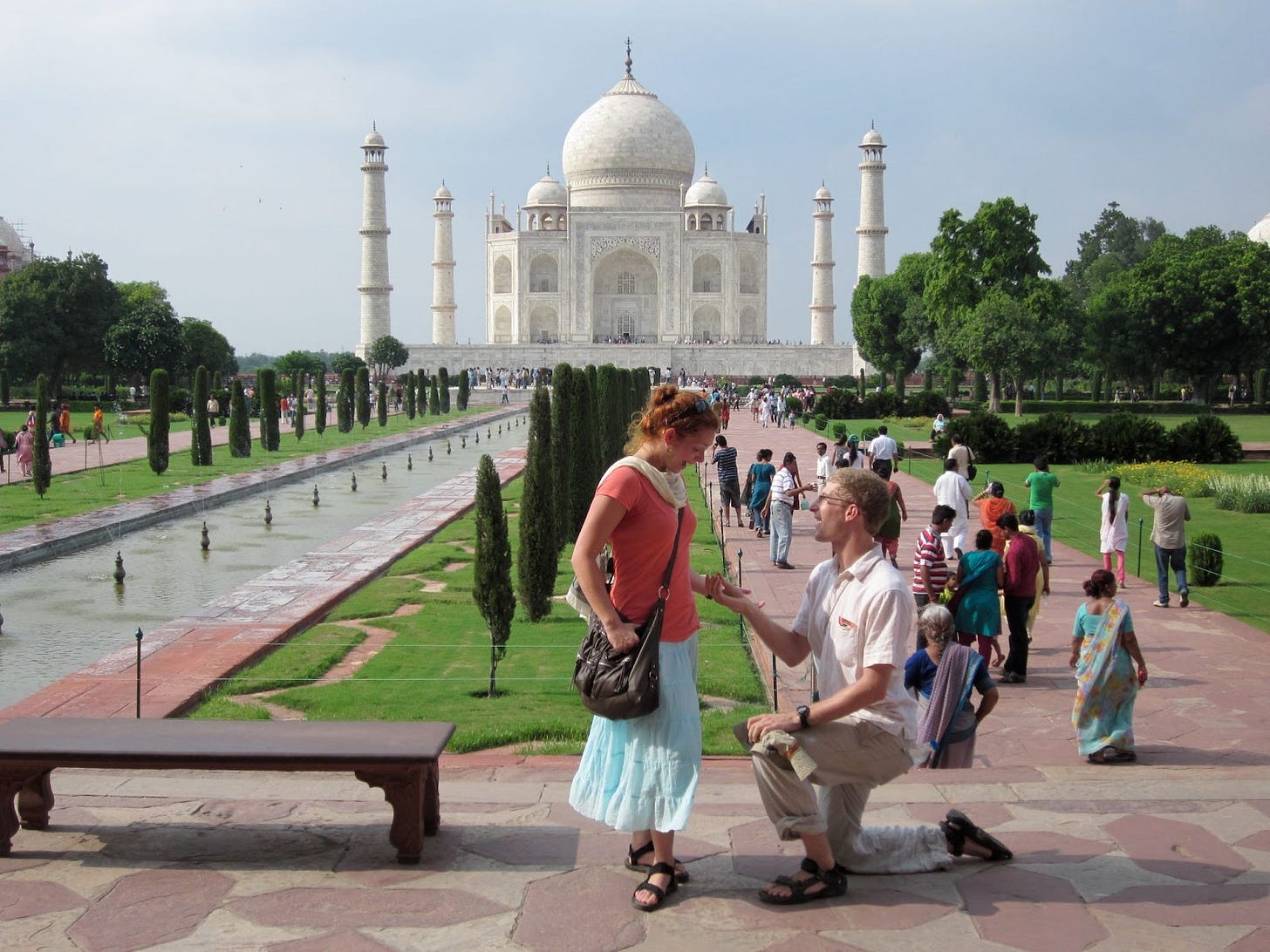How I Got to Here Part II: Bangladesh
A rewarding research trip to Bangladesh convinced me that I wanted to be part of the action.
My shriek came first. Figuring out why came second. It was loud enough that the guest house manager and my translator Pronoy ran in to check on me. I pointed and meekly asked if they could move the hand-sized spider off of my bed. Pronoy walked over, declared it harmless, picked it up, took it outside, and smooshed it to death. I still feel terrible about that spider. In an ongoing attempt to atone, I still capture and release the spiders and bees I find in my house outside.
It was the summer of 2010, and I was a master’s degree student focused on the intersection of climate change, international energy policy, and business. During the fall semester, I’d learned about the exponential growth of offgrid solar home systems (SHS) in Bangladesh. The industry was combining widespread microfinance infrastructure and abundant sunshine to electrify the lives of millions. It’d been two years since I was in China, and I was keen to get out of the library and into the world again, so I arranged a research internship with a think tank in Dhaka and headed off for the summer.
The guesthouse with spiders was in Kurigram, a poor, rural town in the far north of Bangladesh. The seven hour trip from Dhaka to the north began with an overnight bus ride to Rangpur that felt like a bad idea from the jump. Every time I closed my eyes, the bus veered off the narrow road and into the mud to make way for a lorry hurtling towards Dhaka through the monsoon rains. After a brief stop for breakfast at sunrise in Rangpur, Pronoy and I continued on to Kurigram. I marveled at the scenery: the foliage in Bangladesh is a lush, dark color of green that I’ve never seen anywhere else except the country’s flag. We crossed the Tista River on a rusted, colonial era bridge, checked into our guesthouse, and headed out for chai with the regional SHS sales manager we’d arranged to meet up with.
One hundred degree weather with 90 percent humidity is a little hot for tea, but I’d grown accustomed to watching the sweat drip down my face and into my chai. I sweated off 30 pounds that summer, getting down to a weight I hadn’t touched since I was 16 or approached since then. But I loved it. As I wrote to friends:
In some of the villages, I was the first foreigner many people had ever seen. A few minutes after I entered the market, the word was out, and people started appearing. Within minutes most of the village gathered around me and followed along as I headed off to interview SHS owners. I felt famous, but safe. The people I met were very curious and friendly. A ticket taker on a bus asked me if we had rain and rivers in America (it was raining and we were waiting to cross a river) and lots of people couldn't understand why I didn't support Argentina or Brazil in the World Cup.
During one of our afternoon tea breaks, a sadhu identifiable by his saffron-colored robes appeared in the crowd. His possessions were limited to silver bangles, a flute, a bucket hat, and a prodigious beard. According to Pronoy, he’d been wandering the subcontinent for a decade. He came up to me and traded me a few bitter boichi fruits for a mango. He pressed his lips to the flute as I took a picture, and then he walked off. I saw him again a few days later as we waited to cross one of the many rivers that bisect the landscape. There are some experiences that you just can’t get from a book.
The day the spider died began when the monsoon rains woke me up at 4am. By late morning it’d cleared enough for me and Pronoy to head out. The village roofs were uniformly made of corrugated iron. While inexpensive and great for mounting SHS, these roofs trap heat, and would’ve made my indoor interviews unbearable were the conversations not so interesting. Late that morning we entered the home of a sweet shop owner whose wife was in the back at work making jalebi, an orange, deep fried flour pretzel soaked in sugar syrup for sale in the market that evening. Every afternoon, he placed a load of jalebi and the battery from his solar system on the back of his bike and headed for the market. He sold jalebi, charged customer cell phones for a modest fee, and lit up the stalls next to him. His creativity astounded me.
Over a dinner of rice and chicken curry and jhal muri, a spicy, puffed rice snack mix, Pronoy and I talked about the jalebi man and the rest of our interviews from the day as he filled me in on all of the comments he hadn’t translated live. These conversations helped me contextualize what I’d seen in the field. As we finished dinner, I was eager to get back to the guesthouse to spend time with my notebook drawing feedback loops, jotting notes, and fleshing out my thesis. As I entered my room, I shrieked, and thus began the unfortunate end to the spider and another night of fitful sleep for me.
I loved the sense of adventure and action that came from conducting research in rural areas. It was energizing in a way that desk research couldn’t match. I still remember the trek out to Bagher Bar, one of the more remote places we visited. It began by hitching a ride on a flatbed attached to a bike, continued on for a 45 minute boat ride down the river to a small dock marked by a group of local men fishing in chest-high water, and ended with a two mile stroll into the jungle along a dirt path.
Bagher Bar resident Abdul Khalek, a retired high school teacher with a steady flow of remittances from his sons working construction in the Middle East, was our first interview. We spoke in the main room of his home, which was lit by a CFL connected to his SHS. It was the first and only CFL I saw in all of Bangladesh. I asked about it, and he said that he liked to be the first to discover new products. He was the first person in the village to buy a SHS back in 2003, and had encouraged more than 15 of his neighbors to buy one as well. He was the type of community leader and early adopter that technology diffusion academics theorize and write about. Speaking with him and other early adopters was a central input to my thesis and made me feel like all of the travel was worth it.
As I walked through the villages of rural Bangladesh, my mind often turned to Allie, and I decided that it was time to propose. She was also in South Asia, studying yoga at an ashram in the Himalayan foothills of northern India. We planned to meet up in Delhi in August, travel for 10 days, and then head back to the US together.
Our first stop outside Delhi was Agra, home of the Taj Mahal. Shah Jahan built the Taj Mahal as a mausoleum for his favorite wife, Mumtaz Mahal, who died after giving birth to their fourteenth child in 1631. His grief was immense. As the great Bengali poet Tagore wrote:
Though emeralds, rubies, pearls are all But as the glitter of a rainbow tricking out empty air And must pass away, Yet still one solitary tear Would hang on the cheek of time In the form Of this white and gleaming Taj Mahal
I found a backpacker to document the proposal, and he succeeded beyond my wildest expectations. Alas, an icy drink at our next stop in Jodhpur, the Blue City, brought giardia and shigella along for the rest of the trip, killing the romantic vibes. I later learned that shigella is responsible for the majority of infant and child deaths from diarrhea and dehydration in the developing world, and now I know why. The gastrointestinal discomfort was so bad that we went from the airport to the ER.
As I sat down to write my thesis in Boston, I lost myself for hours as I synthesized interviews, technology diffusion theories, and the relevant academic literature into a coherent whole. Yet at the same time the work felt removed. The path from academic writing to impact is circuitous at best. Writing was something I enjoyed and was good at, but it clashed with how I wanted to show up. Teddy Roosevelt’s Man in the Arena speech1 was in my head:
It is not the critic who counts; not the man who points out how the strong man stumbles, or where the doer of deeds could have done them better. The credit belongs to the man who is actually in the arena, whose face is marred by dust and sweat and blood; who strives valiantly; who errs, who comes short again and again, because there is no effort without error and shortcoming; but who does actually strive to do the deeds; who knows the great enthusiasms, the great devotions; who spends himself in a worthy cause; who at the best knows in the end the triumph of high achievement, and who at the worst, if he fails, at least fails while daring greatly, so that his place shall never be with those cold and timid souls who neither know victory nor defeat.
I thought–unfairly–that pursuing an academic path would be to take on the role of the critic and remove myself from the arena, which is where I wanted to be. And so I buried my joy of developing frameworks and writing. Instead of continuing on for a PhD, I decided to work in what I imagined to be the arena: the private sector, beginning with a job selling ecommerce warehousing solutions. It wasn’t what I’d hoped for; cold calling prospects left me drained and disaffected at the end of each workday. Thankfully, I was able to parlay 18 months of ecommerce sales into a role at the only company that values the written word: Amazon.
The Theodore Roosevelt Center - The man in the arena. (n.d.). https://www.theodorerooseveltcenter.org/Learn-About-TR/TR-Encyclopedia/Culture-and-Society/Man-in-the-Arena.aspx Accessed January 24, 2024





Great post. I remember both of those pictures. I rediscovered the blog I kept while in Dhaka, and was very interesting reading, though obviously more focused on labor rights. Glad you are doing so well.